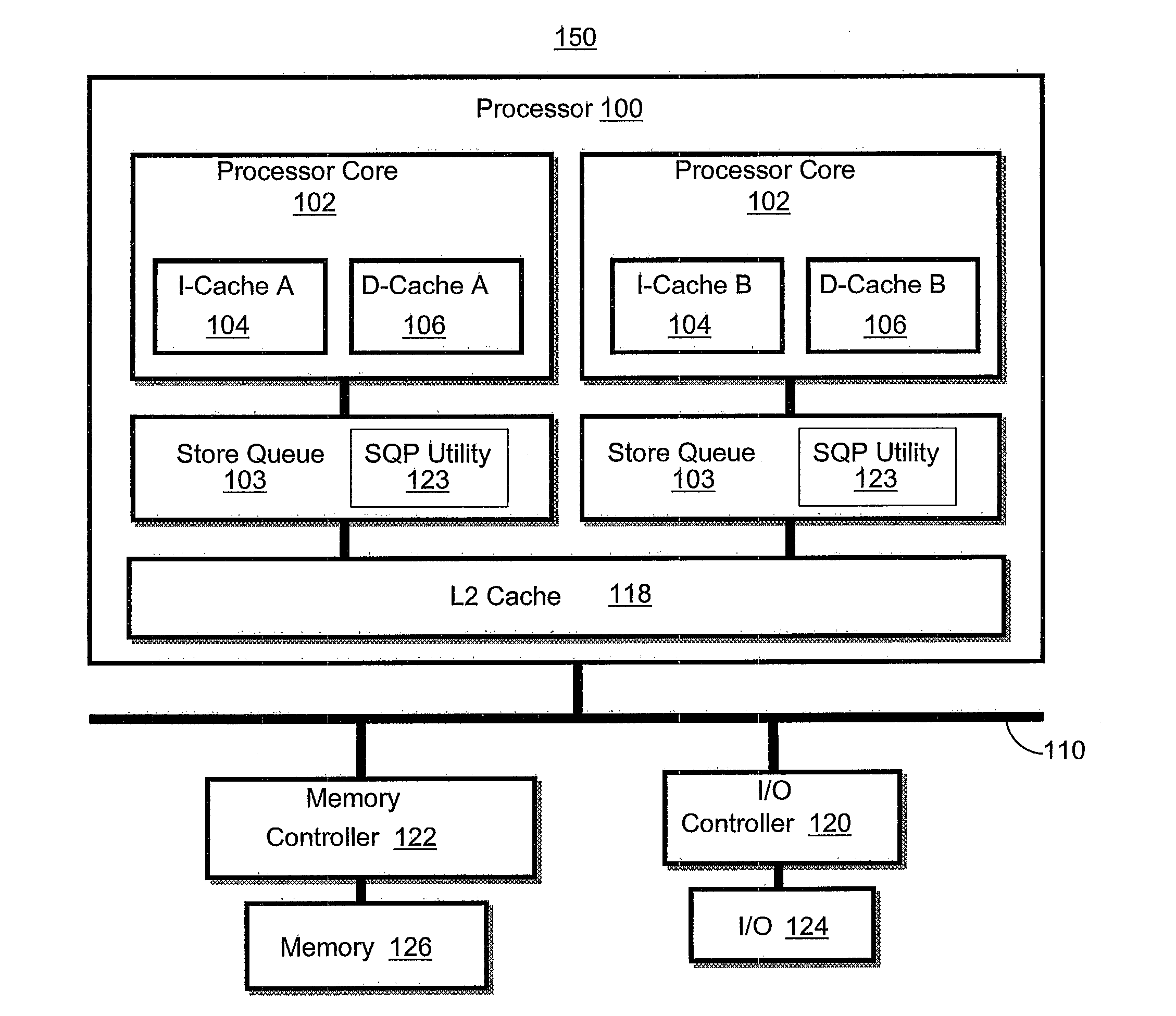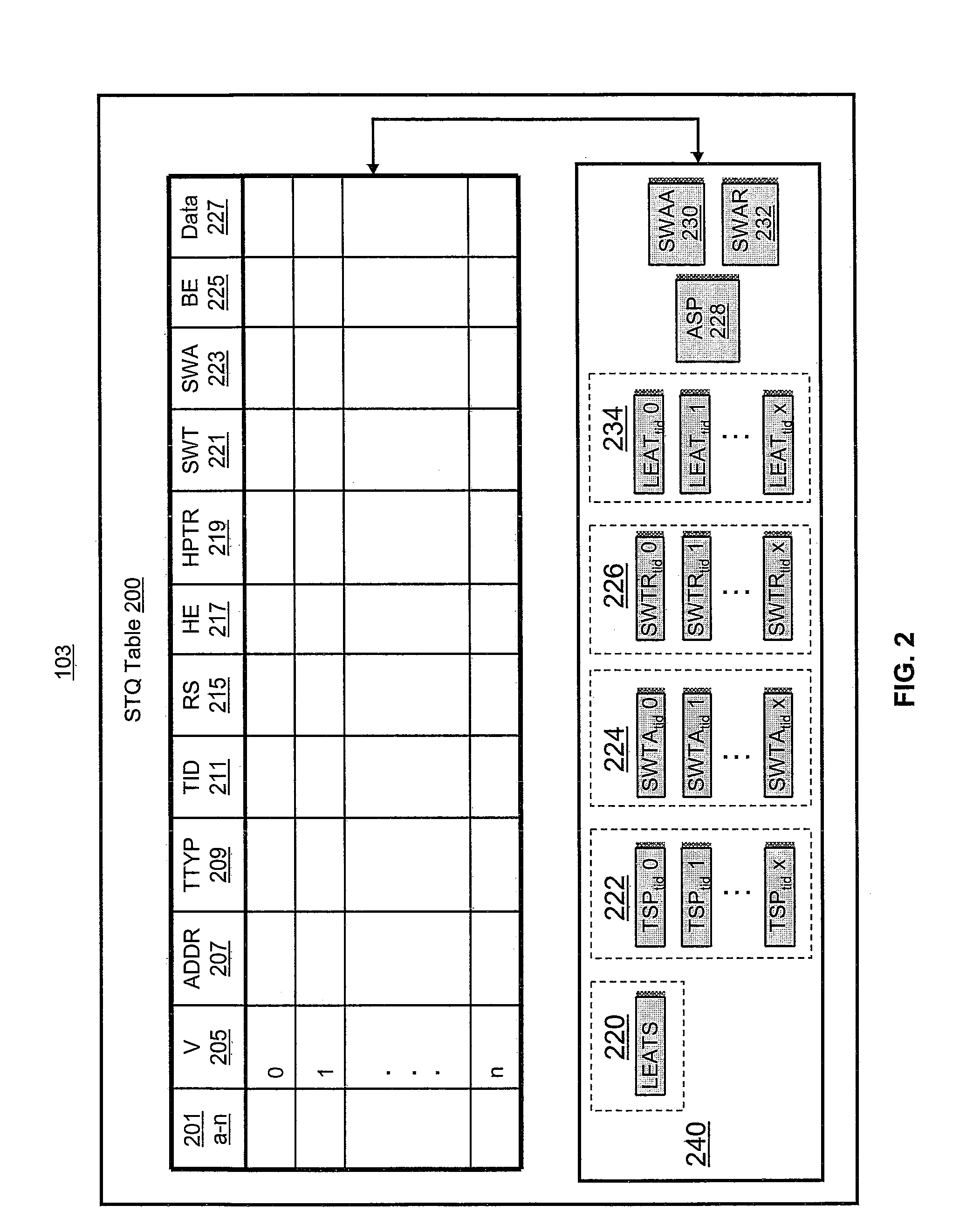Multiple concurrent sync dependencies in an out-of-order store queue
a store queue and dependency technology, applied in the field of processors, can solve problems such as the inability to store data in the cache on consecutive processor execution cycles without success, the inability to store data in the cache, and the inability to synchronize dependencies in parallel, so as to increase the effectiveness of the cache
- Summary
- Abstract
- Description
- Claims
- Application Information
AI Technical Summary
Benefits of technology
Problems solved by technology
Method used
Image
Examples
Embodiment Construction
[0009]Disclosed are a method, system and process for retiring data entries held within a store queue (STQ). The STQ of a processor cache is modified to receive and process several types of data entries including: non-synchronized (non-sync), thread of execution synchronized (thread-sync), and all thread of execution synchronized (all-thread-sync). The task of storing data entries, from the STQ out to memory or an input / output device, is modified to increase the effectiveness of the cache. The modified STQ allows non-sync, thread-sync, and all-thread-sync instructions to coexist in the STQ regardless of the thread of execution. Stored data entries, or stores are deterministically selected for retirement, according to the data entry type.
[0010]In one embodiment, stores are selected for retirement from a STQ according to whether the data entry is a non-sync, thread-sync, or all-thread-sync data entry. Non-synchronized data entries retire out of order (OoO), and synchronized data entrie...
PUM
 Login to View More
Login to View More Abstract
Description
Claims
Application Information
 Login to View More
Login to View More - R&D
- Intellectual Property
- Life Sciences
- Materials
- Tech Scout
- Unparalleled Data Quality
- Higher Quality Content
- 60% Fewer Hallucinations
Browse by: Latest US Patents, China's latest patents, Technical Efficacy Thesaurus, Application Domain, Technology Topic, Popular Technical Reports.
© 2025 PatSnap. All rights reserved.Legal|Privacy policy|Modern Slavery Act Transparency Statement|Sitemap|About US| Contact US: help@patsnap.com



